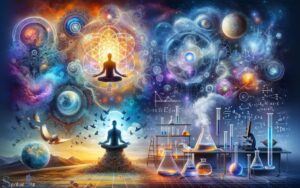Physical Body Vs Spiritual Body: Organs, Cells, Tissues!
The concept of the physical body versus the spiritual body is a profound topic that touches on the essence of human existence.
While the physical body is tangible and perceivable through the senses, the spiritual body is often described as intangible and relates to the soul or consciousness.
The physical body is the biological vessel we navigate the material world with. It’s composed of cells, tissues, and organs, and operates within the laws of physics and biology.
In contrast, the spiritual body, sometimes called the ‘subtle body’ or ‘astral body,’ is associated with the inner experiences of a person such as thoughts, feelings, and beliefs.
This spiritual aspect is considered to be non-physical and is often linked to religious or metaphysical beliefs about the afterlife and the soul.
- Physical Body: Observable, measurable, subject to aging and health. Example: The physical body requires food and rest to function.
- Spiritual Body: Not observable, often associated with the soul or essence, subject to personal and spiritual growth. Example: Meditation practices are believed to nourish the spiritual body.
Navigating the complexities of our existence requires acknowledging both our physical and spiritual dimensions a harmonious balance can lead to a more fulfilling life.
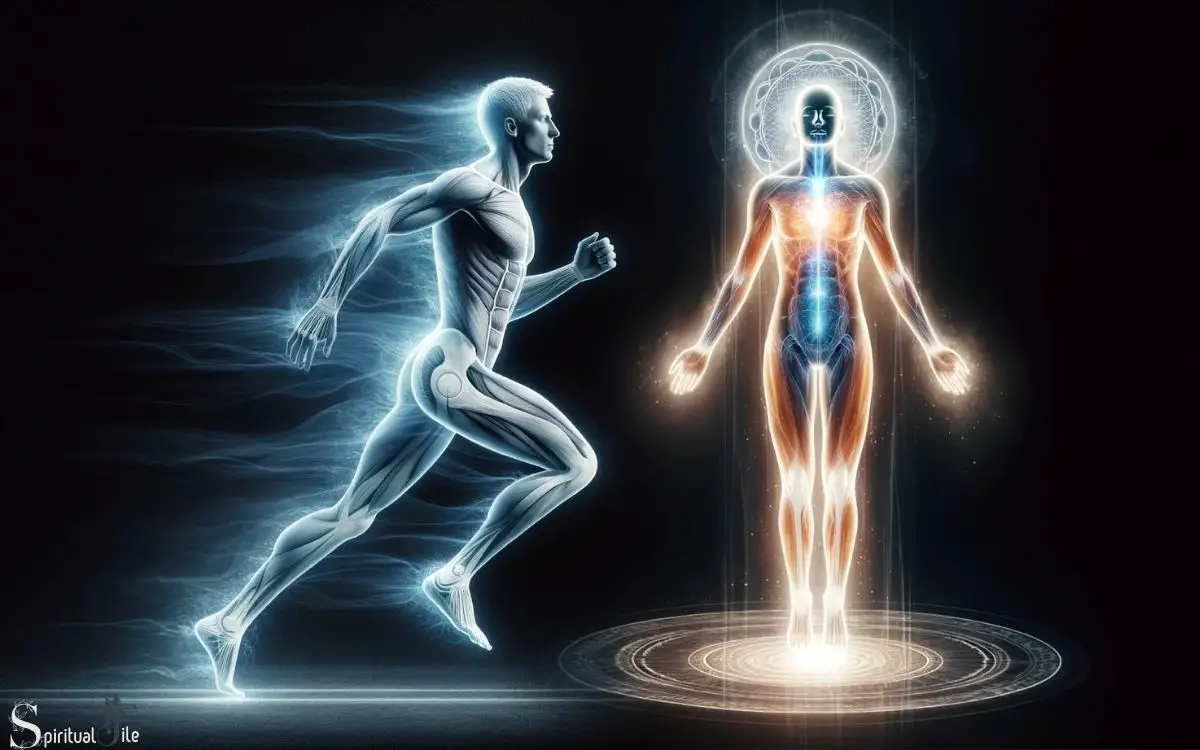
Key Takeaway
8 Aspects: Physical Body Vs Spiritual Body
| Aspect | Physical Body | Spiritual Body |
|---|---|---|
| Nature | Material and tangible | Non-material, ethereal |
| Senses | Five senses (touch, taste, smell, sight, hearing) | Intuition, inner perception |
| Existence | Temporary, mortal | Eternal, transcendent |
| Functions | Biological processes, sensory experience | Soul, consciousness, connection to the divine |
| Health | Subject to illness, aging | Spiritual well-being, unaffected by physical ailments |
| Purpose | Interaction with the physical world | Growth, enlightenment, and higher purpose |
| Identity | Often tied to physical appearance | Inner essence, beyond physical attributes |
| Transformation | Influenced by genetics, lifestyle | Transcendence, spiritual evolution |
The Nature of the Physical Body
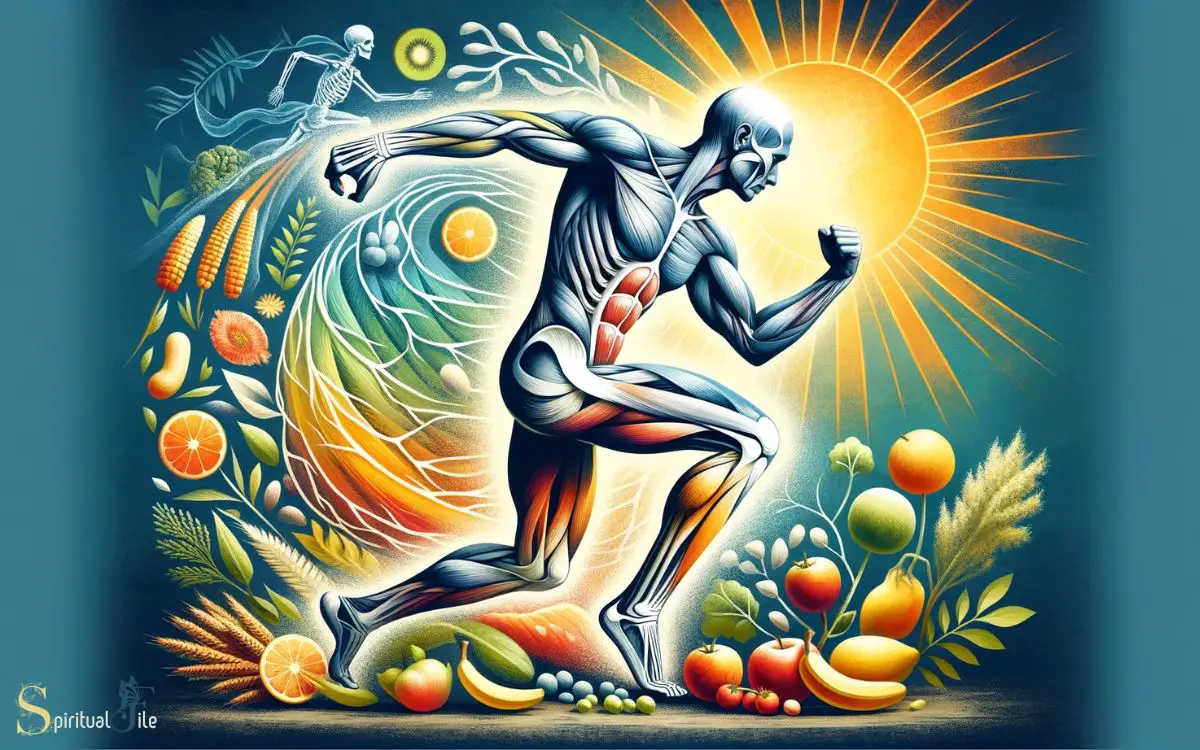
The physical body is a complex and intricate biological entity that serves as the vessel for human experience and interaction with the material world.
It is composed of various systems, including the skeletal, muscular, nervous, circulatory, respiratory, digestive, and endocrine systems, all working in harmony to support life functions.
The body is also the physical manifestation of one’s health and well-being, reflecting the impact of lifestyle, diet, and environment. Each organ and tissue has specific functions, contributing to the overall physiology and homeostasis of the body.
The physical body undergoes continuous growth, development, and aging, adapting to internal and external stimuli. Understanding the nature of the physical body is crucial for maintaining good health and addressing the challenges it may encounter throughout life.
The Essence of the Spiritual Body
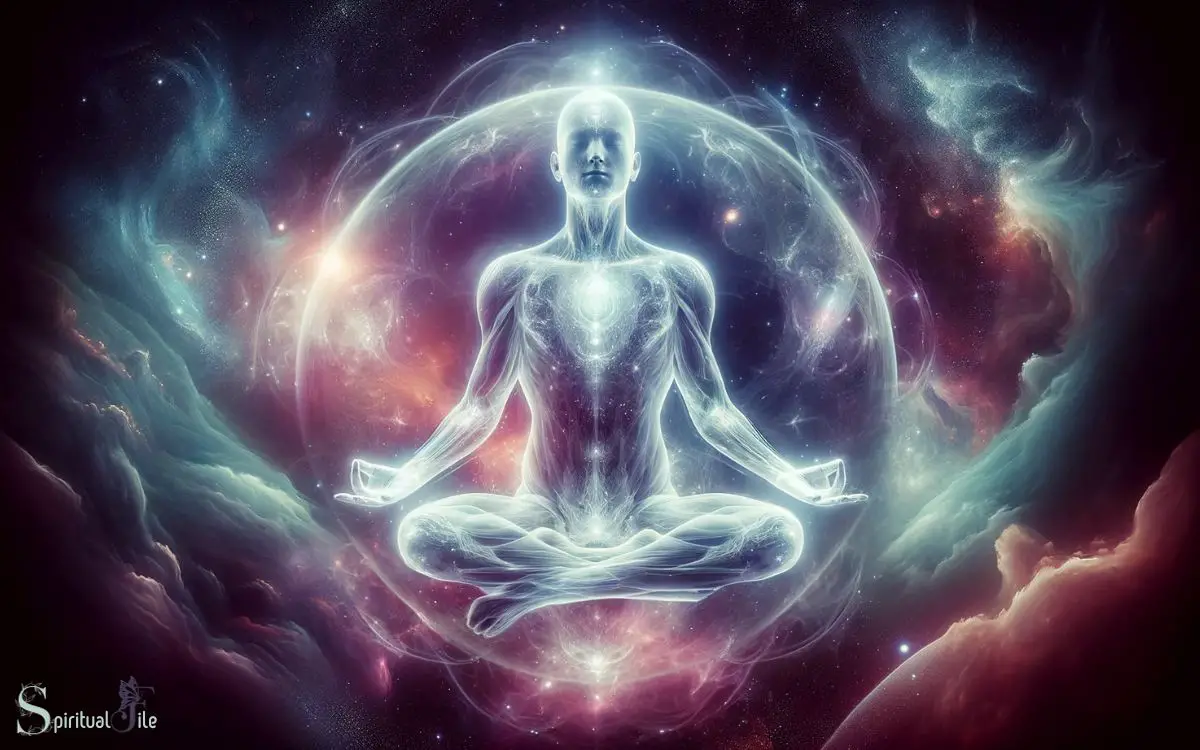
The essence of the spiritual body encompasses the intertwining of spirituality and materiality. This refers to the idea that our spiritual beliefs and practices are not separate from our physical existence, but rather deeply intertwined with it.
It recognizes that our spirituality has a profound impact on how we experience and navigate the material world.
Another important aspect of the spiritual body is the connection to a higher purpose. This involves recognizing that there is a greater meaning and direction to our lives beyond the day-to-day activities.
It is about seeking and aligning ourselves with a purpose that is larger than ourselves, whether that be through religious or philosophical beliefs, or through a sense of connection to nature or humanity.
Attaining inner peace and fulfillment is also a fundamental part of the spiritual body. It involves finding a sense of contentment and harmony within ourselves, regardless of external circumstances.
This can be achieved through practices such as meditation, prayer, or engaging in activities that bring us joy and fulfillment.
Understanding the spiritual body involves recognizing the profound impact of spiritual beliefs and practices on one’s sense of purpose and connection to the world.
It requires us to explore and reflect on our own beliefs and experiences, as well as to learn from the wisdom of others who have delved into the realms of spirituality.
Through exploring these key points, we can gain insight into the transformative power of nurturing the spiritual aspect of our beings.
By cultivating our spirituality, we can enhance our overall well-being and find greater meaning and fulfillment in our lives. It is a journey of self-discovery and growth, as we deepen our understanding of ourselves, our connection to others, and our place in the world.
Spirituality and Materiality
Spirituality and materiality are essential aspects to consider when exploring the essence of the spiritual body. The intertwining of these two elements shapes our understanding of the spiritual body’s existence.
The following table illustrates the contrast between spirituality and materiality, highlighting their distinct characteristics and impact on the spiritual body:
| Spirituality | Materiality |
|---|---|
| Eternal and intangible | Temporary and tangible |
| Focused on inner growth and harmony | Emphasizes external possessions and desires |
| Nourishes the soul and brings inner peace | Provides temporary satisfaction and external fulfillment |
| Connects to higher purpose and meaning | Tethers to earthly attachments and transient goals |
Understanding the interplay between spirituality and materiality is crucial in comprehending the depth of the spiritual body. It sets the stage for exploring the connection to a higher purpose, which we will delve into next.
Connection to Higher Purpose
The connection to a higher purpose is fundamental to understanding the essence of the spiritual body. It transcends the material world, guiding individuals towards a deeper understanding of their existence and their role in the universe.
This connection provides a sense of meaning and direction, allowing individuals to tap into a higher consciousness and align with their true purpose.
It is through this connection that individuals can experience a profound sense of fulfillment and inner peace, transcending the superficial desires of the physical body.
Embracing this higher purpose enables individuals to live with intention, compassion, and a sense of interconnectedness with all living beings. Ultimately, the connection to a higher purpose serves as a guiding light, illuminating the path towards spiritual growth and enlightenment.
Inner Peace and Fulfillment
Attainment of inner peace and fulfillment forms the core essence of the spiritual body. It involves a deep sense of contentment, harmony, and alignment with one’s purpose and values.
Inner peace allows individuals to navigate life’s challenges with equanimity, while fulfillment brings a profound sense of satisfaction and meaning to their existence.
This state of being transcends material possessions and external validation, offering a profound sense of joy and tranquility from within.
The following table illustrates the stark differences between the physical and spiritual aspects:
| Physical Body | Spiritual Body |
|---|---|
| Finite | Infinite |
| Subject to decay | Eternal |
| Bound by senses | Transcends senses |
The pursuit of inner peace and fulfillment is a universal human aspiration, cutting across cultural and religious boundaries. It is the cornerstone of spiritual growth and well-being, fostering resilience and empathy towards others.
Transitioning into the interplay between physical and spiritual realms, it becomes evident that the attainment of inner peace and fulfillment greatly influences the harmony between the two aspects of human existence.
Interplay Between Physical and Spiritual Realms
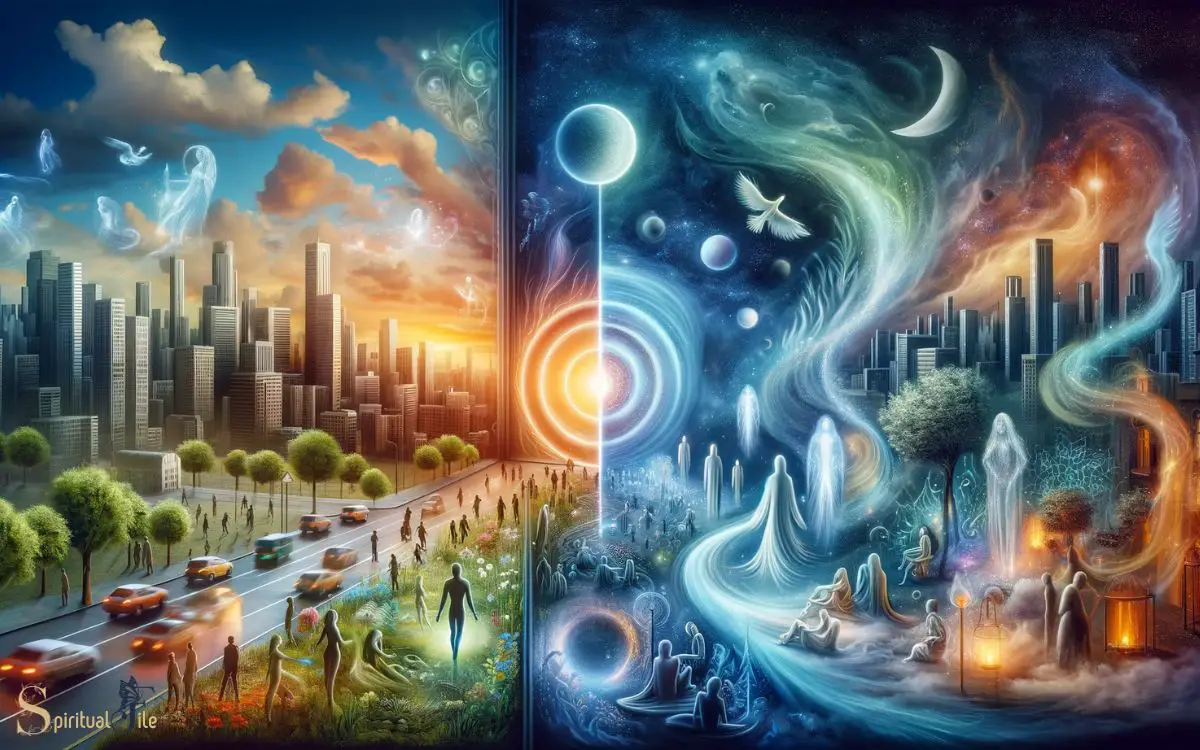
The interplay between the physical and spiritual realms is a complex and intricate relationship that shapes the human experience.
The material world’s influence on our spiritual growth and development cannot be overlooked, as it can either hinder or enhance our spiritual journey.
Similarly, the impact of spiritual growth on how we perceive and interact with the material world is equally significant.
Material World’s Influence
As the material world exerts its influence, the interplay between the physical and spiritual realms becomes increasingly complex. This interaction often evokes a range of emotions in individuals, including confusion and a desire for balance.
Confusion: The clash between the demands of the physical world and the yearning for spiritual fulfillment can leave individuals feeling disoriented and unsure of their path. For example, feeling torn between material success and spiritual growth can lead to inner turmoil.
Desire for Balance: Many seek a harmonious coexistence between their physical and spiritual needs, yearning for a life where both aspects complement and enrich each other. For instance, the longing for a meaningful career alongside a spiritually fulfilling lifestyle reflects this desire.
Frustration: The challenges and distractions of the material world can lead to frustration as individuals struggle to maintain their spiritual practices amidst daily demands.
An example of this is feeling overwhelmed by the pressures of work and societal expectations, causing a disconnect from spiritual pursuits.
Spiritual Growth’s Impact
Navigating the interplay between the physical and spiritual realms often entails striving for a harmonious balance that integrates spiritual growth while addressing the demands of the material world.
The impact of spiritual growth on the physical realm is profound. As individuals progress spiritually, their perception of the material world often shifts.
They may develop a deeper appreciation for the interconnectedness of all things and a heightened awareness of the impact of their actions.
This can lead to a more conscientious and compassionate approach to their physical existence, influencing decisions related to health, relationships, and lifestyle.
Conversely, the state of one’s physical body can significantly influence spiritual growth. A healthy body can provide a more conducive environment for spiritual practices, enabling individuals to engage more fully in activities that nurture their spiritual well-being.
Therefore, the relationship between spiritual growth and the physical realm is intricate and reciprocal.
Understanding Consciousness and Existence
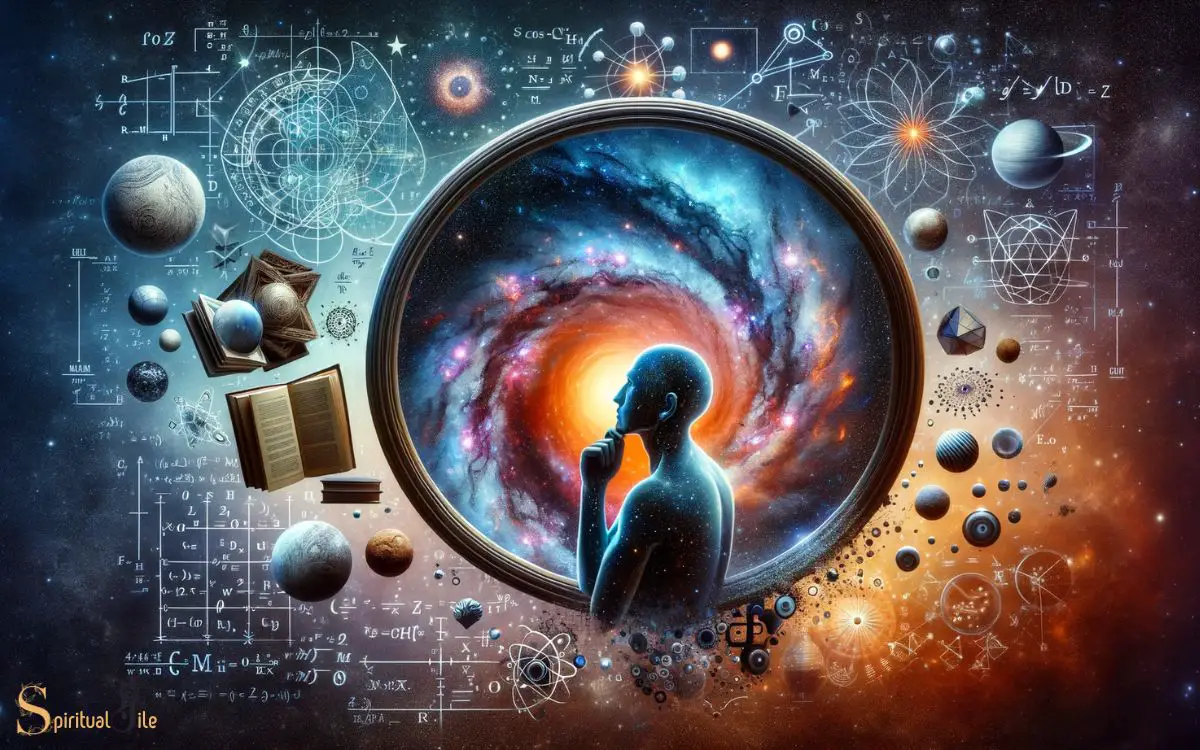
Consciousness is the fundamental awareness of one’s existence and surroundings. It is the essence of our being, encompassing our thoughts, emotions, and experiences.
Understanding consciousness and existence is a journey that can evoke a myriad of emotions in individuals.
- Wonder: Contemplating the depths of consciousness can evoke a sense of awe and wonder at the complexity of human existence.
- Serenity: Exploring consciousness can bring about a profound sense of peace and tranquility as individuals connect with their inner selves.
- Curiosity: Delving into the nature of consciousness often sparks a deep curiosity about the mysteries of existence and the universe.
These emotions are just a glimpse of the rich tapestry that is woven when one embarks on the path of understanding consciousness and existence.
Embodiment of Emotions and Sensations

Experiencing the embodiment of emotions and sensations is a pivotal aspect of the human experience, shaping our perceptions and interactions with the world around us.
Emotions such as joy, sorrow, anger, and fear are felt within the physical body, often manifesting as physiological reactions.
Sensations, on the other hand, encompass a wide range of experiences, from the feeling of warmth to the perception of pain. This embodiment plays a crucial role in how we interpret and respond to various stimuli, influencing our decisions and behaviors.
Understanding the intricate connection between our physical bodies and the emotions and sensations they house is essential for comprehending the complexities of human existence.
It is through this embodiment that we navigate the intricacies of our inner and outer worlds, continuously shaping our understanding of self and others.
This deep connection between our physical and spiritual bodies provides a foundation for exploring the influence of culture and belief systems on our experiences.
The Influence of Culture and Belief Systems
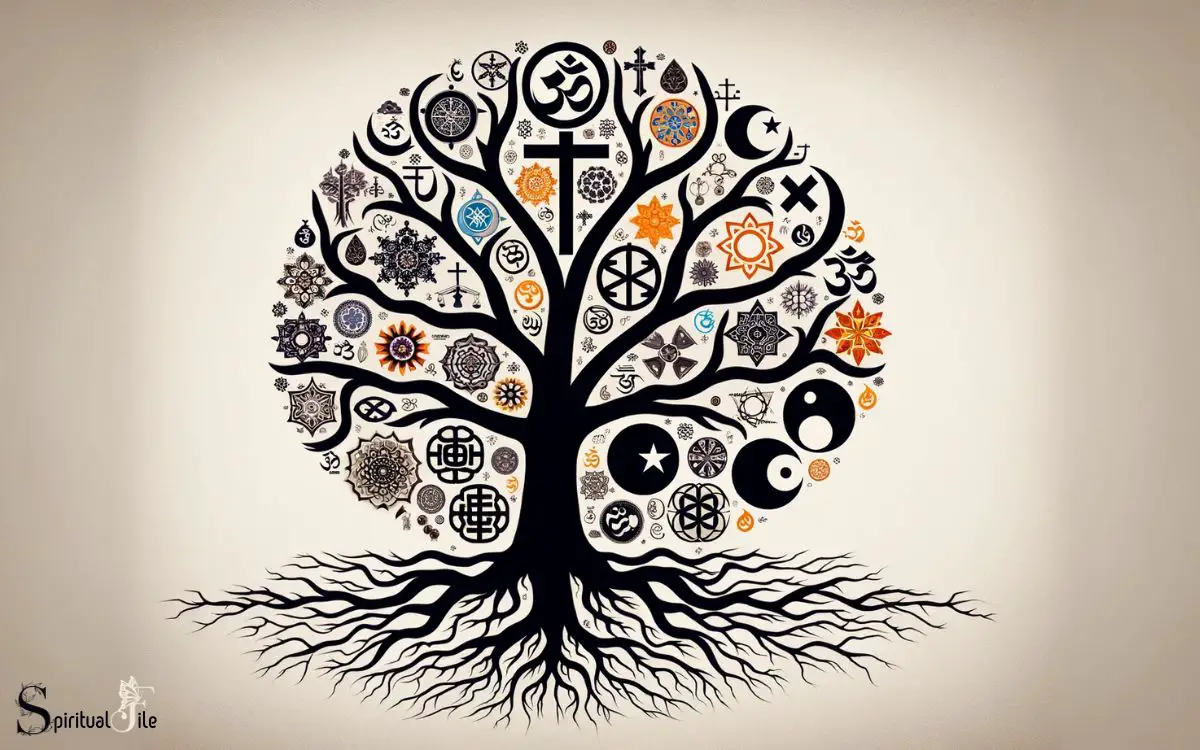
A significant number of cultural and belief systems have a profound impact on the interpretation and expression of emotions and sensations within the physical and spiritual bodies.
Cultural Norms: Cultural norms dictate how emotions are expressed and perceived. For example, in some cultures, it may be acceptable to openly express emotions, while in others, it may be more appropriate to suppress them.
Religious Beliefs: Different religious beliefs prescribe specific ways of dealing with emotions and sensations. For instance, some belief systems advocate for meditation and prayer as a means of managing emotions, while others may emphasize communal rituals to address them.
Interpersonal Relationships: Cultural and belief systems influence the dynamics of interpersonal relationships, which in turn impact how emotions are experienced and expressed within the physical and spiritual bodies.
For example, collectivist cultures may prioritize group harmony over individual expression of emotions.
Achieving Balance and Harmony
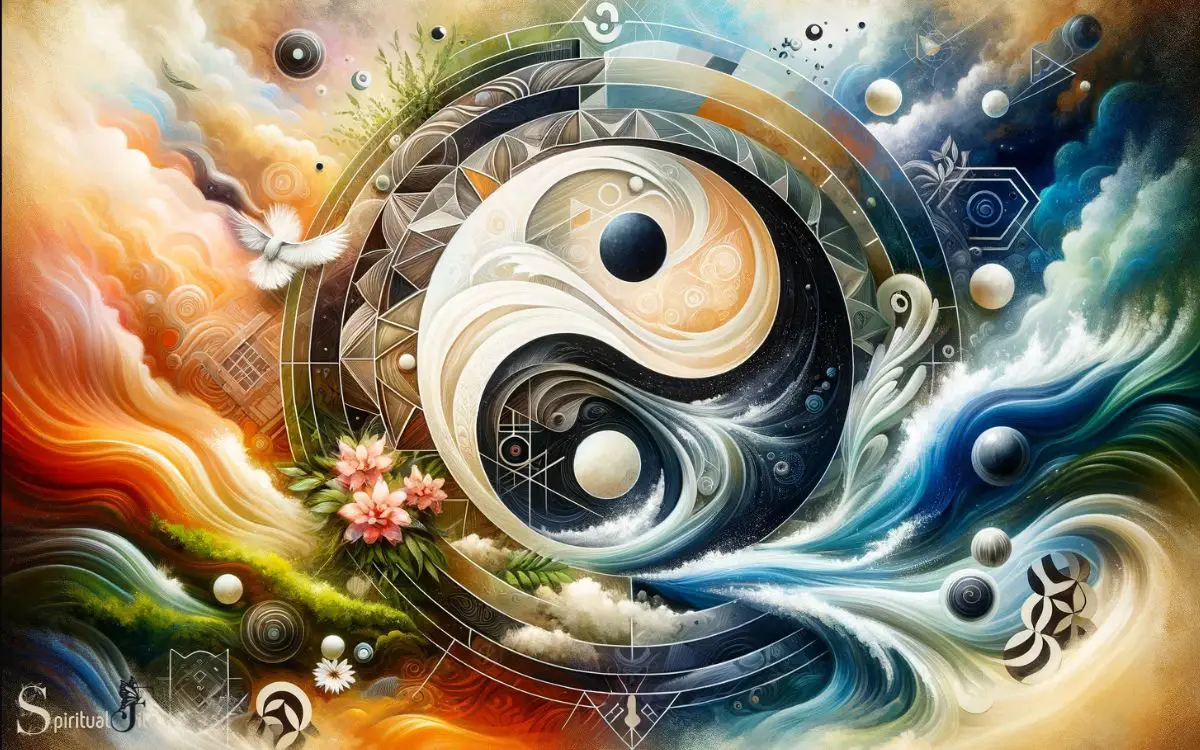
Achieving balance and harmony within the physical and spiritual bodies can be influenced by various cultural and belief systems, which shape the ways in which emotions and sensations are understood and managed.
Different cultures and belief systems offer unique perspectives on achieving this balance. Some emphasize meditation, mindfulness, or specific rituals to align the physical and spiritual aspects.
Others may prioritize physical well-being as a means to spiritual harmony, through practices like yoga or tai chi.
It’s essential to recognize that achieving balance and harmony is a deeply personal journey, and what works for one person may not work for another.
Ultimately, the key lies in understanding and respecting the various cultural and belief systems, and finding a personalized approach that resonates with an individual’s own physical and spiritual needs.
How does Sacramental Communion relate to the physical body and organs?
Sacramental communion prayers connect the physical body to the spiritual realm. Through the act of partaking in communion, believers recognize the symbolic representation of Christ’s body and blood. This sacrament holds significant religious value, as it emphasizes the connection between the physical self and the spiritual beliefs.
Frequently Asked Questions
Can the Spiritual Body Exist Without the Physical Body?
The question of whether the spiritual body can exist without the physical body is a complex and philosophical one.
It delves into the nature of existence, consciousness, and the relationship between the physical and metaphysical realms.
How Does the Interplay Between the Physical and Spiritual Realms Affect Our Daily Lives?
The interplay between the physical and spiritual realms profoundly impacts daily life, influencing emotions, decisions, and perspectives.
Understanding this interplay can lead to greater self-awareness, purpose, and fulfillment, shaping a holistic approach to well-being.
What Role Do Belief Systems and Cultural Influences Play in Shaping Our Spiritual and Physical Bodies?
Belief systems and cultural influences profoundly shape our perspectives, values, and behaviors, impacting both our spiritual and physical well-being.
They provide frameworks for understanding the world, guiding our thoughts and actions in daily life.
Is Achieving Balance and Harmony Between the Physical and Spiritual Bodies a Universal Goal Across Different Cultures and Belief Systems?
Achieving balance and harmony between physical and spiritual aspects is a universal goal across diverse cultures and belief systems.
This pursuit reflects a fundamental human desire for wholeness and integration, transcending individual differences and unifying humanity.
How Does the Embodiment of Emotions and Sensations Differ Between the Physical and Spiritual Bodies?
The embodiment of emotions and sensations differs between physical and spiritual bodies due to varying perceptual experiences and the influence of physical senses versus spiritual awareness.
Understanding these differences is essential for holistic well-being.
Conclusion
The interplay between the physical and spiritual bodies is a complex and intricate dance, much like the ebb and flow of the tides.
Understanding the nature of consciousness and existence requires a deep exploration of the embodiment of emotions and sensations, as well as the influence of culture and belief systems.
Achieving balance and harmony between these two realms is essential for holistic well-being, akin to finding the perfect balance in a delicate, intricate tapestry.





